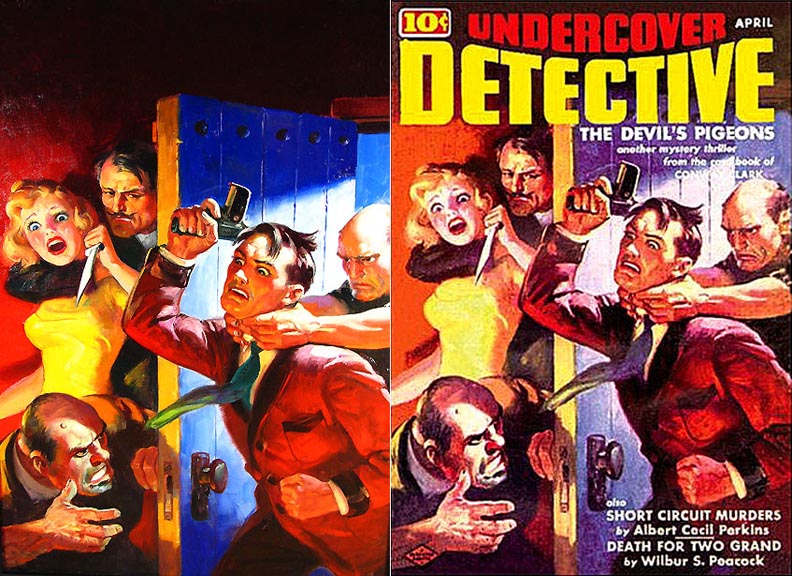Pulp cover art...

Pulp cover art has a unique place in art history. It
has terrific nostalgia appeal for anybody who enjoyed
The Hardy Boys, comic books or even a peek at The Old
Man's collection of True Detective or Stag magazines.
It had the specific purposes to grab your attention
on the newstand in a crowded field of competitor's
and to evoke an emotion, usually with a provocative
image of impending peril or suggestive sensuality.
Common elements usually include a couple of 'toughs',
a large breasted woman and a 'citizen' or a 'hero'.
The above example (original on the left, Rudolph
Zirn, 1939) has all three.
We are excited and delighted to announce a gallery
exhibit of original pulp cover art. The show will
open in October (date tbd) and will include both the
original art and the subsequent ephemera the
originals were used to produce. The colors are
extremely vivid and the techniques used by the
artists to project a response is fascinating.
This is the third year in a row that we have had the
pleasure of working with Grapefruit
Moon Gallery in presenting their collection of
illustration art. In 2007 we presented original
pin-up art (here
and
here) and in 2008 we presented original
Cream of Wheat advertising art. Pulp magazine art
is yet another sub-genre of illustration art that we
are proud to present.
The 'pulps' were fiction magazines that were very
popular from about 1930 to 1960. The term 'pulp'
comes from the cheap paper typically used in
production (cheap paper has a lot of wood pulp). The
magazines became noteworthy for their provocative
covers. The covers became so important that in many
cases the covers were designed first and the text was
designed around the covers. Pulp magazines were also
a major employer of short story authors and the
subsequent demise of the pulp industry created a
vacuum for these authors that has never been filled.
Oil or gouche paintings are used to create the
original cover art. The colors are intentionally
vivid to compensate for the primitive printing
technology at the time. Several pulp cover artists
(i.e., Frank Paul and Margaret Brundage) became
accomplished artists in this genre and attracted a
following. Pulp art has recently experienced a
renaissance in popularity and is widely sought by
collectors.
More details as they evolve but I thought this teaser
would have value.
